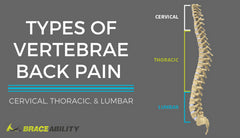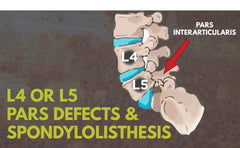Should I Have Surgery for Severe Lumbar or Cervical Spinal Stenosis?
 Spinal stenosis is a common condition in which there is narrowing in the open spaces in your spinal canal. This leads to pressure on your spinal cord and the nerves that travel throughout.
Spinal stenosis is a common condition in which there is narrowing in the open spaces in your spinal canal. This leads to pressure on your spinal cord and the nerves that travel throughout.Surgery for spinal stenosis is not typically your first line of defense for treating spinal stenosis. Before surgery is considered, it’s advised to try conservative methods of treatment such as exercises (swimming, yoga, biking, walking), acupuncture, and injections. But in instances where conservative methods or treatments are ineffective or if the condition is impairing the function of your nervous system, surgery for cervical spinal stenosis or lumbar spinal stenosis is considered. If severe may be experiencing numbness or weakness that hinders your ability to walk or disrupts your bowel or bladder function.
Spinal stenosis most often shows up in the lower back and neck area of the spine, with stenosis of the lumbar spine being the most common. However, cervical spinal stenosis can be more dangerous because it involves compression of the spinal cord. Thoracic spinal stenosis is fairly rare.
Spinal stenosis back surgery, generally speaking, involves efforts to ease pressure on the spinal cord or the spinal nerve to fix and maintain the alignment and strength of the spine. This might involve trimming, adjusting or removing problematic parts of the spine that are compromising its function and/or pressuring the spinal canal or nerve roots.
Should I Get Back Surgery for My Spinal Stenosis?
A study by the National Institute of Arthritis and Musculoskeletal and Skin Diseases on spinal stenosis surgery success rate data shows that surgical treatment is more effective for relieving the low back and leg pain symptoms of spinal stenosis and for improving function than non-surgical treatments.
Considering this, you might be wondering why wouldn’t you immediately pursue stenosis of the spine surgery? Well, for one, there are major risks associated with both cervical spinal stenosis surgery and lumbar stenosis surgery. And sometimes conservative methods such as modifying your activities, wearing a neck or back brace for spinal stenosis treatment and engaging in targeted exercises are able to resolve the condition at a much better price than the spinal stenosis surgery cost.
Simply being subject to general anesthesia involves risks. Some of the other more common complications that are linked to spinal canal stenosis surgery include the development of:
- Infection
- Blood clots
- Tear in the membrane covering the spinal canal in the area of the operation
While such issues can be remedied, they can push back spinal stenosis surgery recovery time.
Other risks associated with cervical or lumbar stenosis surgery include:
- Nerve damage
- Bleeding
- Failure of the bone fusion to heal (if applicable)
- The return of symptoms
- Failure of the surgery to relieve the pain and other symptoms
Laminectomy Surgery for Lumbar & Cervical Spinal Stenosis
The most common type of surgery for stenosis of the spine is decompressive laminectomy. This spinal stenosis surgery involves removing the lamina (the top) of one or several vertebrae to create more space in the spine.
Along with this decompression surgery for spinal stenosis, a surgeon may also fuse the vertebrae together to stabilize the spine and to prevent or slow any additional degeneration of the spine. As part of the decompressive laminectomy, a surgeon may also remove part of an intervertebral disc to create more space for the vertebra roots and remove any other obstructions to their passage.
A laminectomy surgery for lumbar spinal stenosis (with or without spinal fusion) is estimated to yield good to excellent results in roughly 80% of patients, according to the American Academy of Orthopedic Surgeons.
Minimally Invasive Spinal Stenosis Surgery: Interspinous Process Spacer
Looking for a minimally invasive surgery for spinal stenosis? You might consider the insertion of an interspinous process spacer. This device helps keep the space through which the nerves pass open by holding the vertebrae apart and it requires limited bone removal.
Decompression is also possible via a spinal stenosis minimally invasive surgery that relies on microscopes or endoscopes and x-rays for visuals of the area on which the surgeon is working; this is also known as a microsurgery for spinal stenosis. This involves a smaller incision as well as a shorter hospital stay and a shorter period for spinal stenosis recovery time. But not everyone is a candidate for these less invasive spinal surgery options.
Laser Decompression Surgery for Narrowing of the Spine
Another alternative is laser surgery for spinal stenosis. But do not assume that because laser spinal stenosis surgery sounds “high-tech” that spinal stenosis laser surgery is a superior procedure. There is a lot of controversy on the benefits of laser spine surgery, as some believe the other options are more effective. The benefit of laser surgery spinal stenosis procedures are not well studied and critics say such methods actually involve more risks than traditional procedures.
For laser spinal stenosis surgery, a laser is used instead of a scalpel and removes the soft tissue that may be pressing on your nerves. Other instruments are needed during this surgery besides a laser to help remove bones and ligaments.
How Can I Easily Recover from Spinal Stenosis Surgery?
Depending on the type of surgery, how severe your spinal stenosis is (spinal fusion surgery may take longer to recover from), and your age, the recovery time may vary from individual to individual. Usually, it takes somewhere between six to twelve months for a patient to make a full cervical or lumbar stenosis surgery recovery.
A doctor may recommend pain medications and the use of ice or heat therapy following surgery to deal with discomfort and inflammation. If you’ve had the spinal fusion surgery, you cannot use any anti-inflammatory medications such as ibuprofen, Advil, aspirin, etc. for six months as to this may cause bleeding.
Strength and flexibility exercises may also be prescribed for the neck as part of cervical spinal stenosis surgery recovery or for the back and abdomen in instances of lumbar spinal stenosis surgery recovery. These exercises help strengthen and improve the flexibility of your muscles in your back, core, arms, and legs.

A spinal stenosis brace may also be recommended for added immobilization and support for daily activities and/or during physical therapy following back surgery spinal stenosis procedures. As with all surgery, there are restrictions for which you must follow to help prevent further injury and increase your recovery time. Some specifically for post-spinal stenosis surgery include:
- Avoid sitting for a long period of time
- Avoid lifting items that are heavier than 10lbs
- Try not to twist or bend at the waist
- Avoid high contact sports (check with your doctor on which activities may be appropriate for your condition)
- Do not smoke




